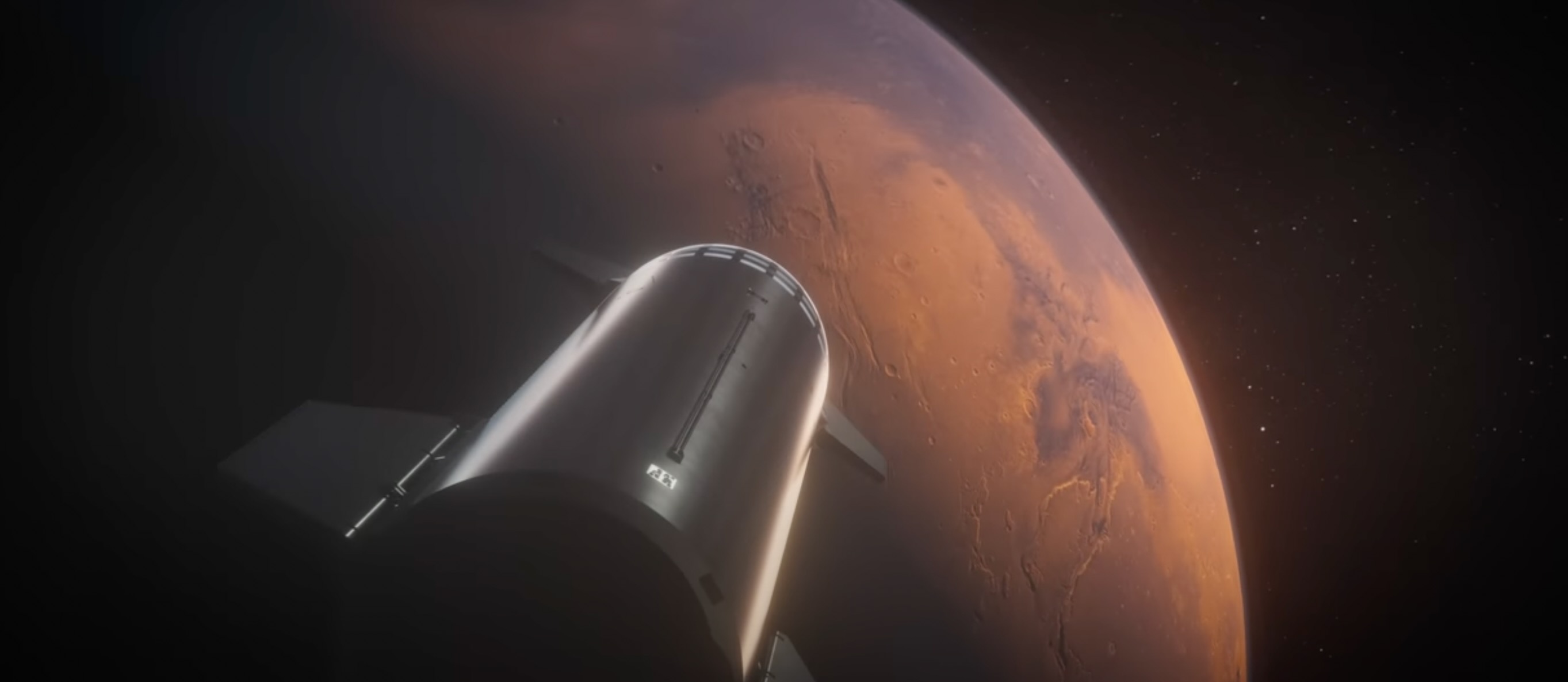SpaceX's massive new Starship vehicle launches toward Mars in a stunning new video that captures the ambition of Elon Musk's deep-space vision.
The 5-minute animation, which SpaceX posted on YouTube Monday (April 10), begins with a flyover look at Starbase, the company's facility on Texas' Gulf Coast. About a minute in, a Starship lifts off from the seaside site.
The video then shows Super Heavy, Starship's 33-engine first stage, come back for a landing atop its orbital launch mount. The booster settles in softly, supported by the launch tower's "chopstick" arms.
The 165-foot-tall (50 meters) Starship upper stage, meanwhile, meets up with a tanker in Earth orbit, loading up on fuel for the long trip to Mars.
Related: SpaceX's Starship looks amazing stacked for launch in these photos

Starship gets there safely, at roughly the same time as three other vehicles, which together create four bright streaks in the dark Martian sky.
The animation ends with a view from inside the just-landed Starship. Its hatch opens, and four spacesuit-clad passengers look out upon a Red Planet landscape speckled with lights that surround a big domed habitat.
Breaking space news, the latest updates on rocket launches, skywatching events and more!
It's humanity's foothold on Mars, which, in the animation's universe, was doubtless established thanks largely to the efforts of Starship. The enormous vehicle will be the most powerful rocket ever launched by nearly a factor of two, according to SpaceX. And it's designed to be fully and rapidly reusable, a breakthrough that Elon Musk believes will make bold spaceflight feats like Mars colonization economically feasible.
Starship has yet to fly more than a few miles above Earth's surface, but that should change soon. SpaceX is gearing up to launch the first-ever orbital test flight of the vehicle, which could lift off as soon as next week, Musk said recently.
If the orbital trial and further flights go well, SpaceX will start working to send the stainless-steel vehicle much farther afield. NASA chose Starship to be the first crewed lander for its Artemis moon program, for example, with an astronaut touchdown currently targeted for 2025.
SpaceX has also booked several private round-the-moon missions with Starship in the coming years. And we know that SpaceX's ambitions extend far beyond Earth's natural satellite; Musk has said repeatedly that he founded SpaceX back in 2002 primarily to help humanity settle Mars and become a multiplanet species.
Mike Wall is the author of "Out There" (Grand Central Publishing, 2018; illustrated by Karl Tate), a book about the search for alien life. Follow him on Twitter @michaeldwall. Follow us on Twitter @Spacedotcom or Facebook.
Join our Space Forums to keep talking space on the latest missions, night sky and more! And if you have a news tip, correction or comment, let us know at: community@space.com.

Michael Wall is a Senior Space Writer with Space.com and joined the team in 2010. He primarily covers exoplanets, spaceflight and military space, but has been known to dabble in the space art beat. His book about the search for alien life, "Out There," was published on Nov. 13, 2018. Before becoming a science writer, Michael worked as a herpetologist and wildlife biologist. He has a Ph.D. in evolutionary biology from the University of Sydney, Australia, a bachelor's degree from the University of Arizona, and a graduate certificate in science writing from the University of California, Santa Cruz. To find out what his latest project is, you can follow Michael on Twitter.
